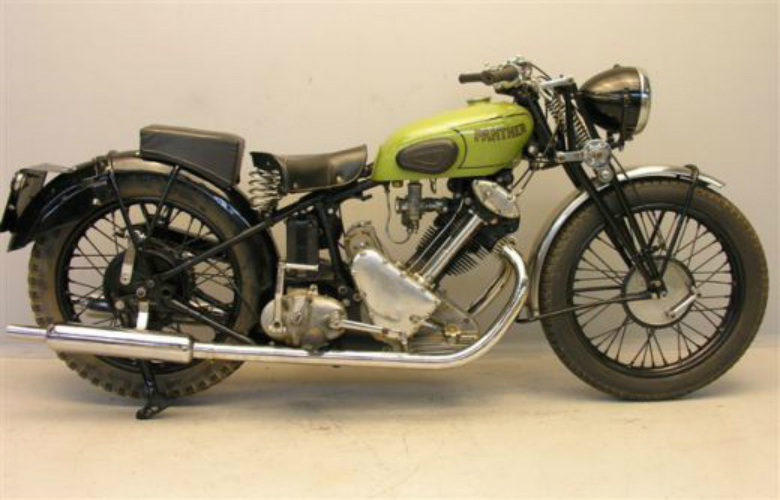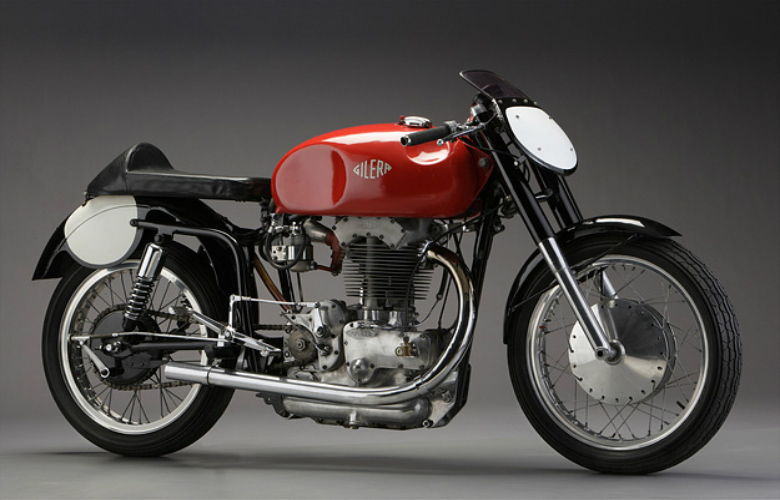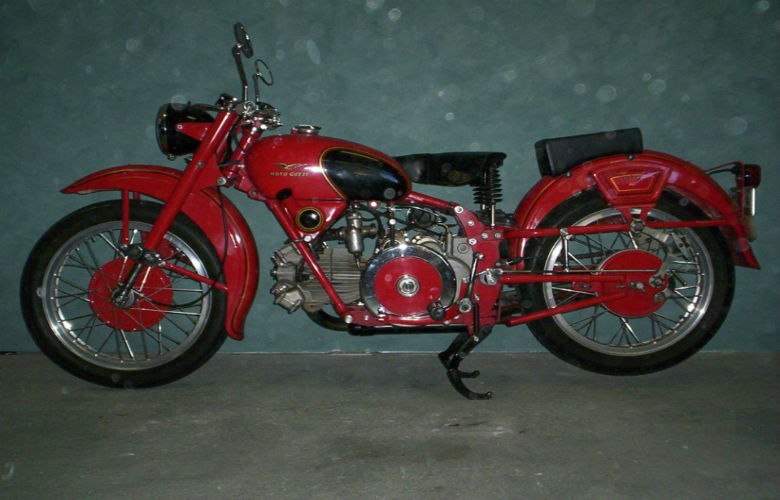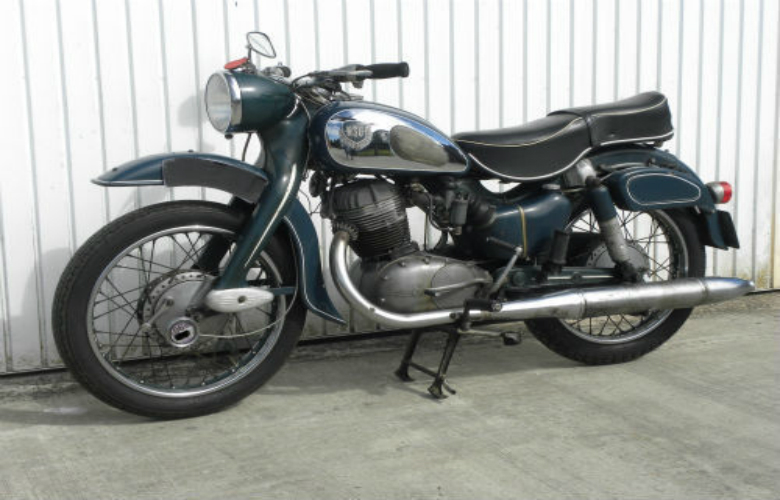
Click Motor to go Home
The Classic Factor
powered by style



 Art & Design Gallery
Links
Art & Design Gallery
Links
Contact Julian via theclassicfactor@gmail.com

Click Motor to go Home
The Classic Factor
powered by style



 Art & Design Gallery
Links
Art & Design Gallery
Links
Contact Julian via theclassicfactor@gmail.com

By definition, not many motorcycles are three-wheelers! Nor is the Panther 100S...but it gets as close as any. By 1960, Panther reckoned that around ninety per cent of the bikes out there were pulling a sidecar - as often as not, a Watsonian single-seater. In those days, such a three-wheeled set-up was for many the best way to get about - until the cheap, mass-produced car came along, that is - and consigned Panther production to the history books at the tail-end of the Sixties.
A glance at the 100S is enough to reveal its most striking attribute. Engines come in every shape and size, but seldom can a configuration have been quite as skewed as the Panther's. Its Sloper motor does just that...tilted dramatically forward of the upright. Such a rotation might have been expected to play havoc with the oil circulation, at least, but Panther's engineers clearly knew a thing or two, because the 100S is nothing if not reliable. The long stroke (100mm) of the 598cc Sloper served up sufficient torque for the Panther to press on with alacrity - even with a passenger-laden 'attachment' in tow. Wedged snugly into a sidecar, a top speed of 68mph was probably quite quick enough!
Yorkshire, England, was as appropriate a place as any for Panther to have been based, given that its product was solid, rugged and dependable - qualities traditionally associated with that Northern county! Panther began as Phelon and Moore, or P&M, and their Slopers first surfaced in 1904. These single-pot pushrod powerplants, complete with their two air-cooled overhead valves, were and still are a unique sight in the world of classic motorcycles. The 100S could not be described as glamorous, and yet the way in which its exhausts swoop away from those steeply banked ports is nothing less than elegant. Defining an era in which which the motorcycle and sidecar were family transport, styling was secondary. The 100S needed to get from A to B and back again with a minimum of fuss, and this it accomplished most successfully.

A famous marque in the Fifties, the name of Gilera has been resurrected several times in later decades, with varying degrees of success. Its landmark model, the Saturno, first went into production in 1946, kitted out in Sport, Touring or Competition mode.
The production racer option was a hit both on the roads and racetracks! While no Grand Prix contender, the Saturno was keenly competitive in less frenzied races for many a season - remaining there or thereabouts for quite a time after its production run finished at the fag-end of the Fifties.
In road-going trim, the Saturno remained resolutely attached to the tarmac, thanks to its telescopic forks and vertically-situated rear shocks. Latterly, the once-great brand Gilera was associated with Piaggio, Vespa and the scooter scene - illustrious names in their own right, of course - but by then its own 'glory days', when it served up bikes of the stature of the Saturno, were but a glimmer on the horizon.

It is fitting that one of the most successful bikes that Moto Guzzi ever built was named after a bird of prey - the Falcone, which flew onto the motorcycle scene in 1950. Fitting, because the Moto Guzzi emblem is a winged eagle. One of three founders of the firm, Giovanni Ravelli, was killed in a plane crash, and his two partners utilised the insignia of the air corps to which they had all belonged in tribute.
The Falcone was from a long line of flat-singles, which ranged from luxury tourers to sparse and spare racers. The Falcone itself came in both Sport and Touring options. Such versatility kept the bike in production until 1976 - fully twenty-six years since its inception. It was a popular sight on Italian roads and this, too, was key to its longevity. With its flat 'bars and rear-set footrests, the Falcone was a dynamic ride in Sporting mode. The 'fire-engine red' paintwork was well-suited to its outgoing style. Top whack was 85mph, but a judicious sprinkling of Dondolino engine parts made for a mouth-watering 100mph plus - all served up from way down low in the rev range.
The seeds of the Falcone's 498cc powerplant had been sown way back in 1920, when Carlo Guzzi designed the first of the bikes which would bear his name. Its four-stroke motor, with a hard-working horizontal cylinder, just kept on going in every sense - including its production run! More recently, the transverse V-twin has become a Guzzi trademark. But the company has been going for getting on for a century now - always stylish, yet with a homely feel, to boot. Here is to another hundred years for gorgeous Guzzi - and more bikes with the finesse of the fabled Falcone.

Rather like Harley-Davidson in the States, BMW have monopolised Germany in the public perception of great motorcycle marques. In the latter case, one of those forgotten firms is NSU, which produced its first 'primitive' bike in 1901, and then released a steady stream of successful machines right up until the early Sixties. Both on road and track, NSU were at the forefront of two-wheeled endeavour, and deserve their place in motorcycle history every bit as much as their illustrious compatriots.
NSU began by knocking out knitting machines, before branching into bicycles - and subsequently into motorbikes and cars. The company hit pay dirt motorcycle-wise when, in 1929, it invited Norton designer Walter Moore to assist in the development of its first overhead-camshaft bike...the resulting machine was not unlike the British firm's CS1 - which led some Norton wags to opine that NSU was short for 'Norton Spares Used'! Ignoring such ribaldry, NSU pressed on to become one of the world's biggest bike manufacturers by the time of the Second World War.
Probably the finest hour for NSU came in the form of the 250cc Supermax. Launched in 1955, it lived up to its billing, insomuch as it did pretty much everything well! Acceleration and braking were impressive - handling equally so. The performance return from its single overhead-cam engine, pressed-steel frame and leading-link forks gave the bike great kudos. The Supermax sailed to a 75mph top speed. As always, such pedigree came at a price - and not one enough people were prepared to pay to keep the good ship NSU afloat, bikes-wise. The Sixties were the signal for a switch to car production. But not before NSU had registered on the bike racing dial in emphatic style. In 1953 and '54, Werner Haas won for them at the highest level, and '55 saw the marque take the 250 crown for the third time in as many years! Quite clearly, then, BMW had a rival in the field of two-wheeled pursuits. NSU, too, produced a panoply of prestigious motorcycles...none more so than the sublime Supermax.